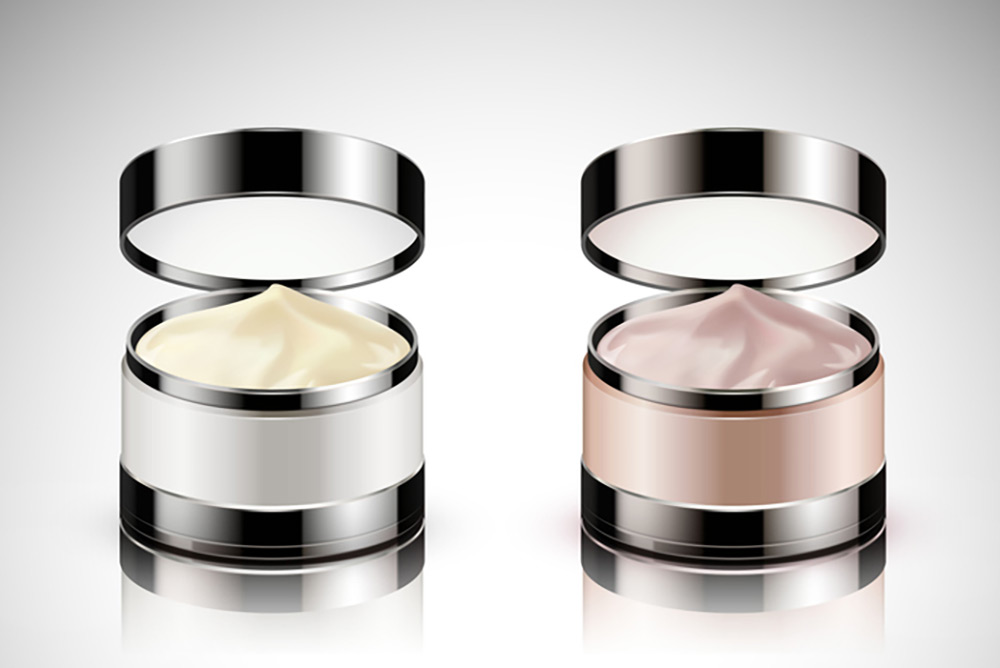By Valerie Monroe
If you’re interested in feeling happier about your appearance—especially as you age—you might like reading what she has to say about it. For more of her philosophical and practical advice, subscribe for free to How Not to F*ck Up Your Face at valeriemonroe.substack.com.
Q: Under your guidance I recently bought some products containing retinol. I’m only now realizing that you write about the benefits of retinoids—a different word! Is there a difference? Should I only be looking for products containing retinoids?
A: Dear reader, I understand your confusion! There is a difference in the chemical structure of a retinoid versus a retinol. But because I did so poorly in high school chemistry (my teacher allowed me to pass by writing biographies of notable chemists; it was that or have me possibly blow up the classroom), I’ve sent your question to the brilliant dermatologist Laurel Geraghty, who also happens to be a former magazine editor. She’s determined to help us understand what we need to know.
So, are retinoids the same as retinols? The word “retinoid” is used to describe the entire family of compounds derived from retinyl palmitate (vitamin A). Thriving in this family are four cousins: retinol, retinoic acid, retinaldehyde, and retinyl esters. Most of us non-chemists are familiar with the vitamin A derivative, retinol. Without getting into the family DNA, what we need to know is that the retinoic acid available by prescription (and in OTC options Differin Adapalene Gel 0.1% and LaRoche Posay Effaclar Adapalene Gel 0.1%) is faster-acting than the retinol in most OTC products, which has to go through a conversion process before doing its work. So it takes longer to see effects.
Geraghty begins with a caveat.
“Aside from pregnancy and lactation, there are other reasons not to use a prescription-strength retinoid,” she says. “I would estimate that 5% to 10% of the population—mostly sensitive-skin types—can’t tolerate a topical retinoid at all, no matter how carefully they try to ease into a routine, or what strength or formulation they apply, or how well they try to compensate with a rich, soothing moisturizer (or the old moisturizer-retinoid-moisturizer sandwich).
“While most of us can teach our skin to adapt to a retinoid through a gradual increase in the frequency and strength of a product,” says Geraghty, “when it leaves us red, flaky, and irritated for weeks on end, it’s not worth continuing. If that’s you, let it go. There are other effective ingredients for skin rejuvenation.”
As for the rest of us non-pregnant, non-lactating individuals, regular use of a topical retinoid product can do so much for the skin. Geraghty considers it second only to sunscreen in its importance for skin rejuvenation. Why? Because it can change the trajectory of how our skin ages.
Retinoids are not about blasting our faces with the strongest-possible formula, says Geraghty. They’re for consistent use over time (this could be 2, 3, 5, or 7 nights per week; whatever we can manage without excess irritation). They can help minimize pores, treat overworked oil glands, stimulate collagen, even-out skin tone and texture, prevent and treat breakouts, and more.
“I almost always recommend the prescription-strength retinoid tretinoin since it comes in different formulations, and—because it’s tested and prepared as a drug, not a cosmetic—you know you’ll get results,” says Geraghty. “Prescription Altreno (tretinoin 0.05% lotion) is my retinoid of choice. I apply it every night my skin isn’t feeling unduly dry or sensitive.”
As for choosing the most effective OTC retinol product, Geraghty admits that can be a challenge. Since few OTC products list or indicate their retinoid strength or formula, it helps to have ESP in selecting one 🎱. If your signal’s weak, get personalized recommendations from your board-certified dermatologist. Or read on . . .
“I hate to play the brand-name game, but reputable skincare brands do instill confidence that their OTC products have been appropriately formulated, and tested, and will deliver results,” says Geraghty.
Among the brands she recommends: Roc is long known for its stabilized retinol formulations, and the products tend to blend retinol with antioxidants, hyaluronic acid, or other soothing ingredients to make them less irritating. Another good starter is Olay Regenerist Retinol 24 + Peptide Night Face Moisturizer, a mild formula loaded with moisturizers to help avoid significant irritation. It makes sense that retinols blended with hydrating soothers such as ceramides, niacinamide, glycerin, dimethicone, and aloe are kinder and gentler to the skin.
Retinol is a naturally unstable ingredient, so if it’s encapsulated—as it is in both CeraVe Resurfacing Retinol Serum and Alastin Skincare Renewal Retinol 0.5—we can be confident that it is isn’t going to break down rapidly and lose strength in the time it takes to apply it.
“Encapsulated retinols may also penetrate the outer layer of skin more effectively for better results,” Geraghty says. Slow-release formulas like Paula’s Choice 1% Retinol Booster can also help reduce irritation. (Here, the former magazine editor offers an analogy: Rather than chug a double espresso and suffer a jolt of heart palpitations and jitters, why not sip gradually and enjoy a smoother ride?)
Retinaldehyde (sometimes called retinal) is a middle-ground ingredient—more powerful than retinol, yet milder than prescription tretinoin. “I often recommend Avène’s RetrinAL 0.1 Intensive Cream for sensitive- or combination-skin types looking to remove retinoid training wheels. I also recommend it for impatient souls seeking a gentle, nonprescription option; because it doesn’t have to go through as many chemical conversion steps to reach its active form, it’s expected to deliver faster results than retinol,” she says.
Finally, are you leaning green? Geraghty suggests checking out bakuchiol, a trendy ingredient derived from the babchi plant (whose English name is the less appealing “purple fleabane”). Like a retinol, it stimulates the retinoid pathway within the skin. It’s touted as a trigger for the same cascade of collagen-stimulating and skin-tone-evening goodness without significant irritation. Geraghty recently read through a randomized, placebo-controlled study (admittedly small) comparing retinol and bakuchiol. The researchers showed that both significantly reduced wrinkling and hyperpigmentation, with no statistical difference between the two—but the bakuchiol was better tolerated, with retinol users reporting more stinging and flaking. However: small study, jury still out. 🤔
Remember that with a retinoid, it’s best to start slowly, with consistent (if infrequent) use at first. Though it can take 3 to 6 months before seeing results, you’re more than likely to find a retinoid relative to happily call your own.


